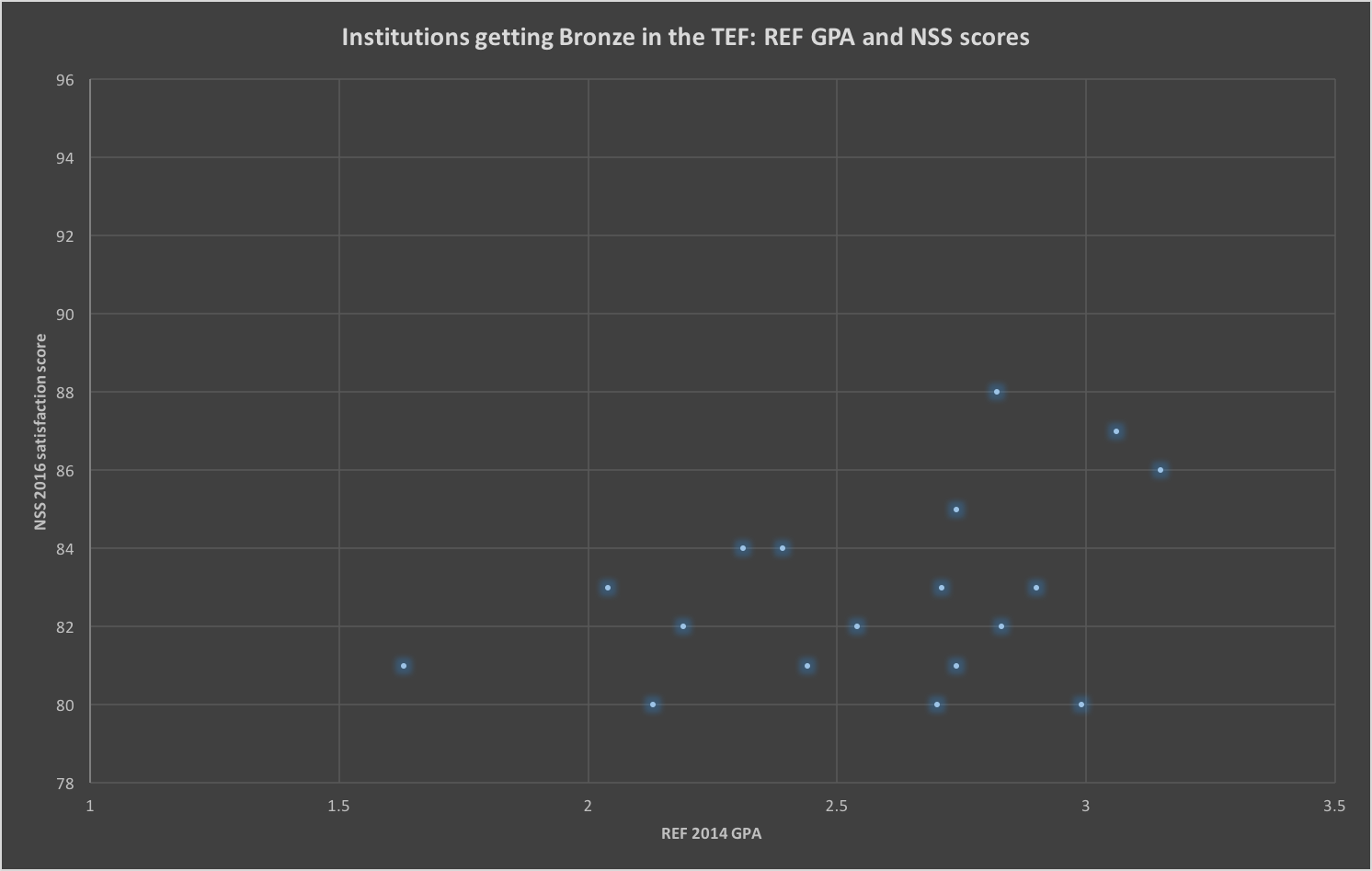The results of the teaching excellence framework (TEF) are likely to keep university analysts busy for months trying to answer a simple question: what makes a “gold” institution?
Given the use of the National Student Survey as a basis of half the metrics used in the TEF, this is the obvious starting point (see below for NSS and research excellence framework scores by TEF award).
Comparing the 2016 overall scores for satisfaction (although this in itself was not the basis for the TEF data) suggests a correlation: a university rated gold had a median NSS score of 90, whereas this was 85 for “silver” institutions and 82 for “bronze”.
This could be one factor explaining why London-based institutions, which tend to perform badly in the NSS, are less likely to have achieved gold: just 21 per cent of TEF-entered universities based in the capital received the top rating, compared with 33 per cent overall.
Similarly, the use of dropout rates as a metric is likely to be another reason why London universities fared relatively badly.



Note: above charts do not include institutions without a REF or NSS score
Good TEF performance is certainly not the preserve of the research elite. Gold-rated institutions had a median grade-point average in the 2014 REF of 2.95, not wildly different from the median for silver-rated institutions of 2.70, while the bronze-rated median was actually very slightly higher (2.71).
However, there is a clearer pattern when comparing the TEF results with Times Higher Education’s World University Rankings – which although focused on research do consider other factors. Of universities in the TEF that rank among the global top 200, only three were left with bronze awards, while 11 were given gold and 15 silver.
Perhaps most clearly, THE’s own attempt to model the possible TEF outcomes using similar metrics last year was pretty close to the mark. Of the top 10 institutions in the “mock TEF”, only one – Swansea University – did not gain gold. The median mock TEF benchmarked scores for universities that ultimately received gold (76), silver (54) and bronze (40) also suggest that the approach was valid. And given that THE’s methodology was based purely on metrics (and did not include the written submissions that formed part of the actual TEF), it also suggests that metrics may still have driven the official results.
Find out more about THE DataPoints
THE DataPoints is designed with the forward-looking and growth-minded institution in view
Register to continue
Why register?
- Registration is free and only takes a moment
- Once registered, you can read 3 articles a month
- Sign up for our newsletter
Subscribe
Or subscribe for unlimited access to:
- Unlimited access to news, views, insights & reviews
- Digital editions
- Digital access to THE’s university and college rankings analysis
Already registered or a current subscriber?




